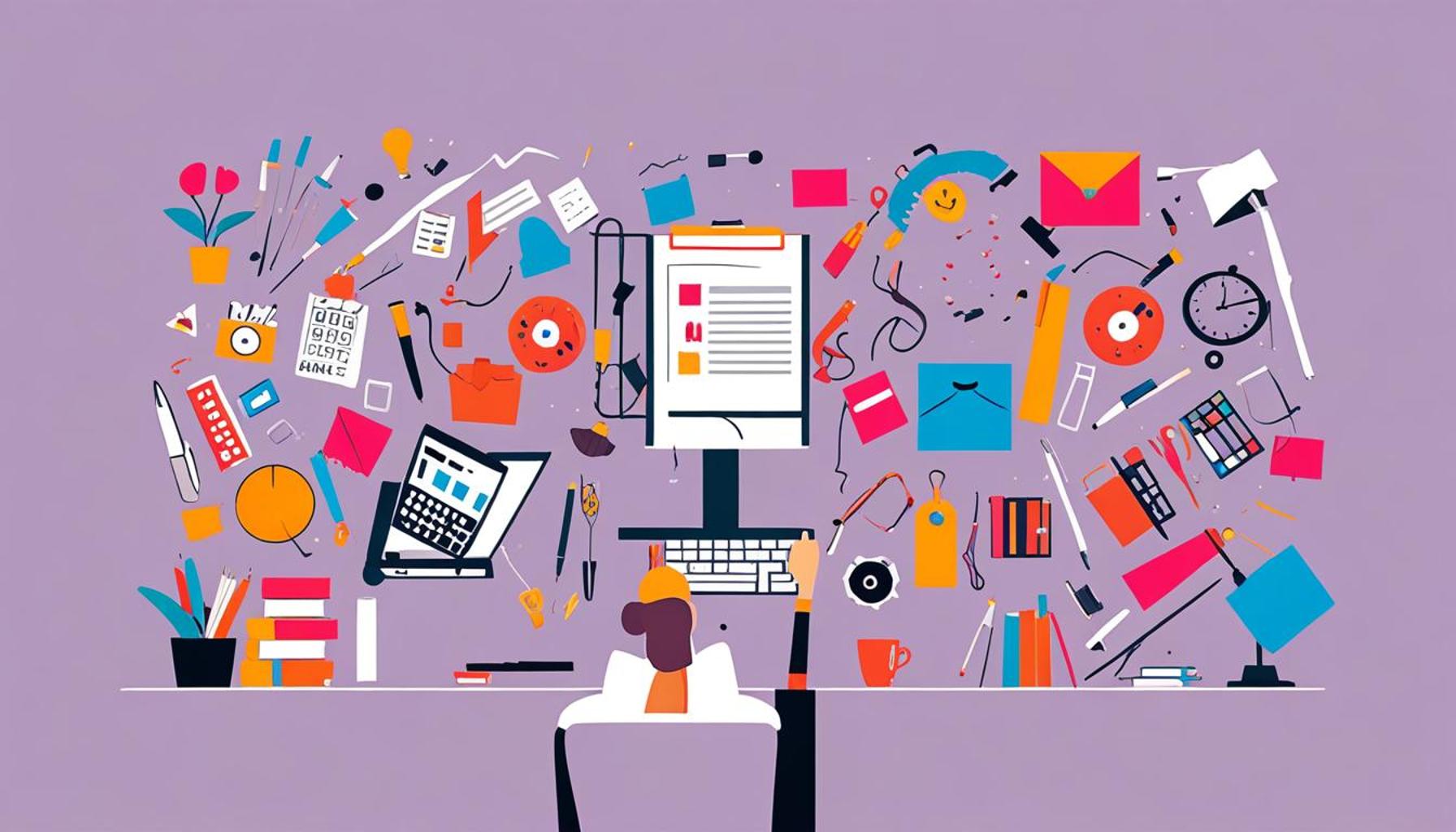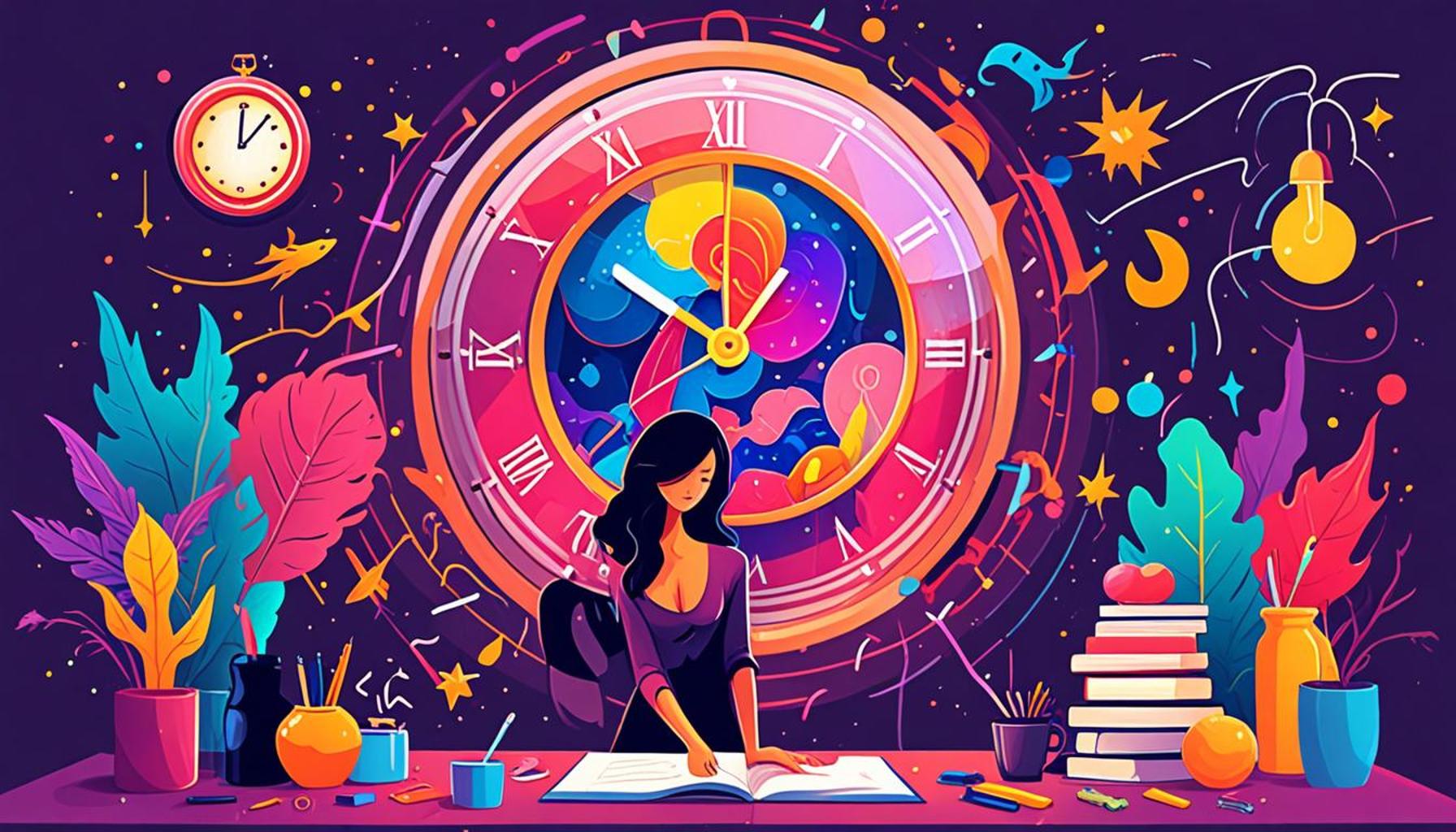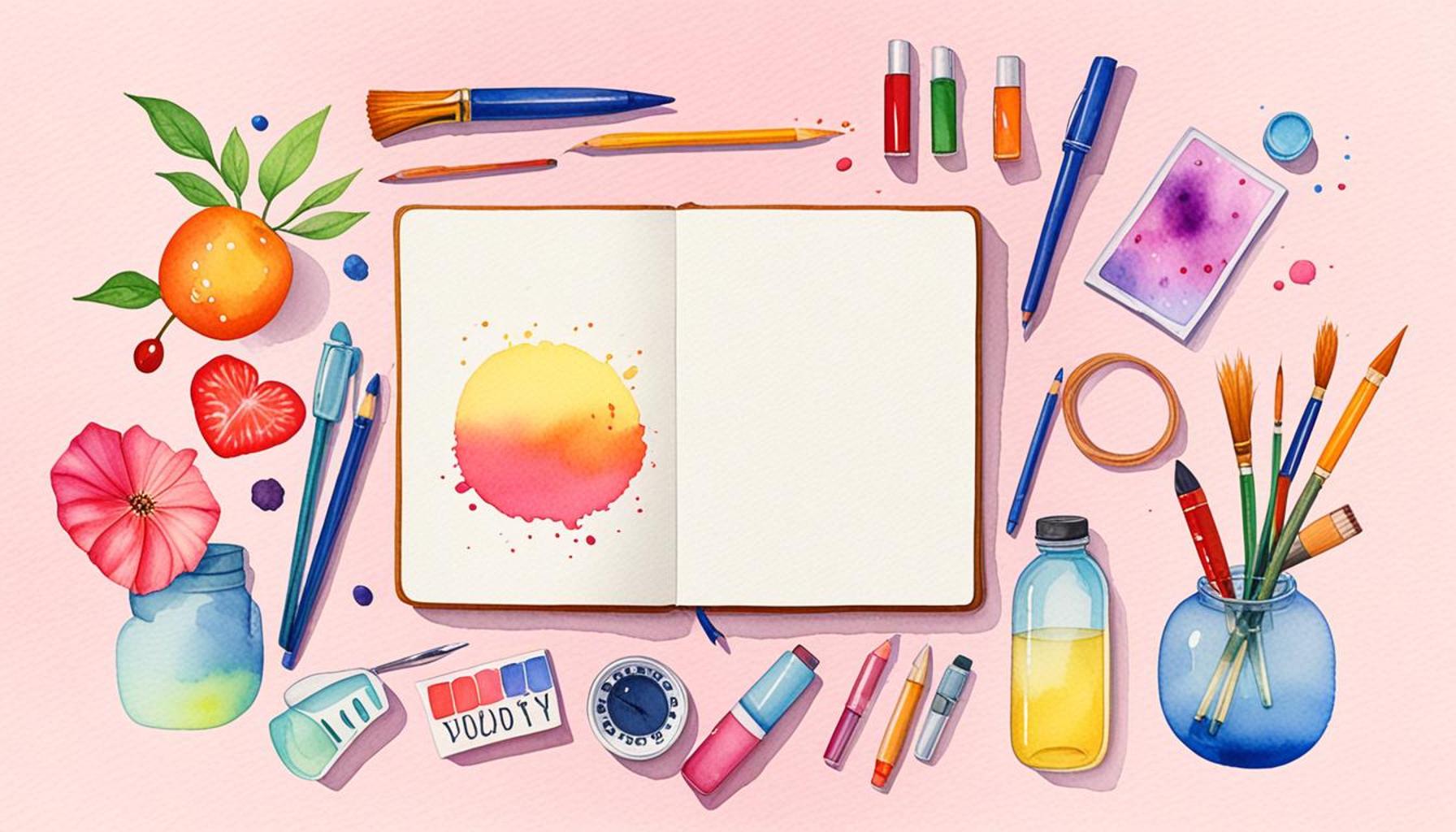Disconnect to Connect: Minimalist Productivity Hacks in a Digital World
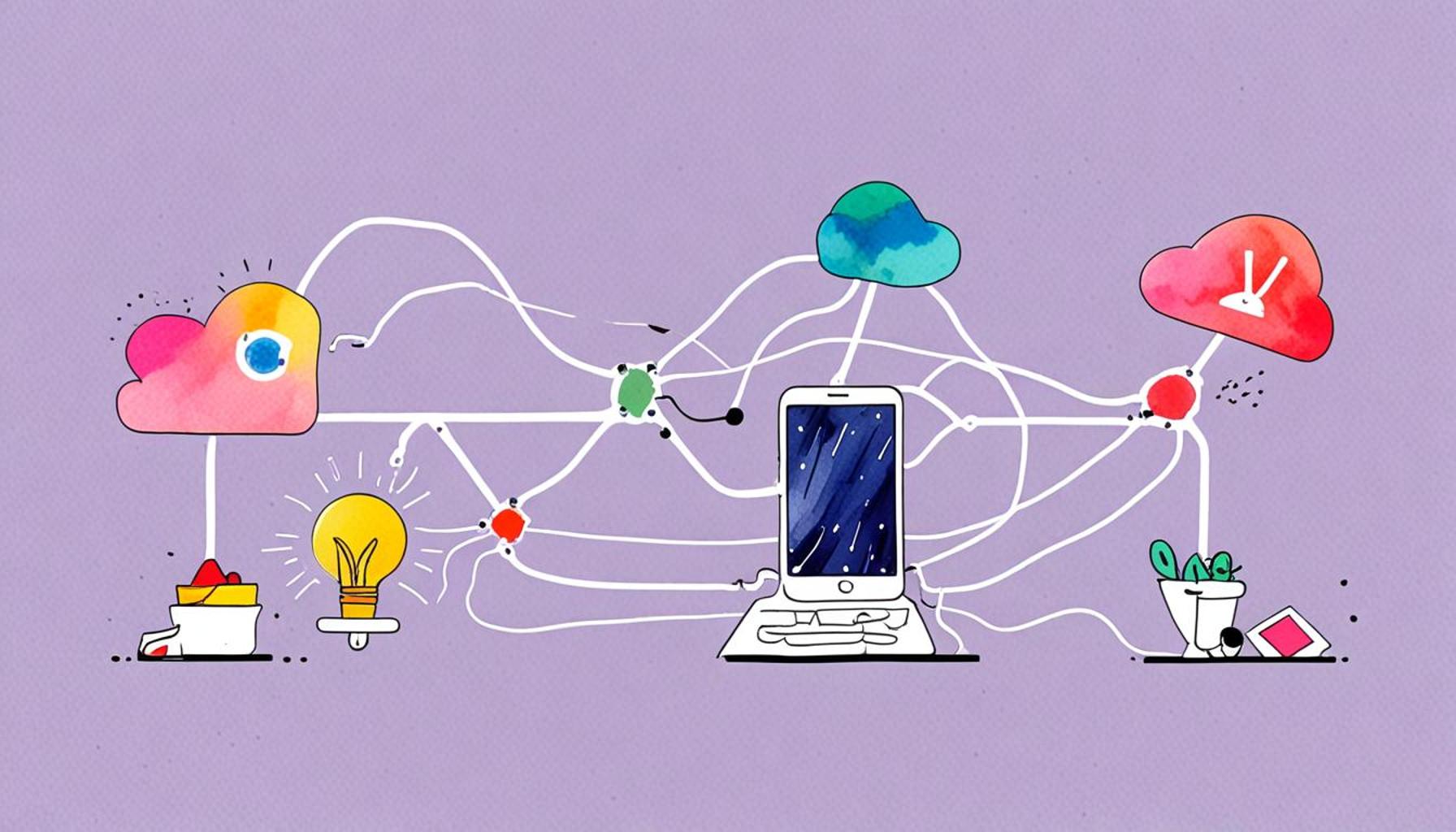
The Challenge of Digital Distractions
As daily life becomes increasingly intertwined with technology, many individuals find themselves confronting a barrage of distractions. Each ping from our smartphones, each flashing notification, and each scroll through social media diverts our focus from more meaningful tasks. The modern workplace in the United States, which relies heavily on digital communication tools like Slack and Microsoft Teams, often exacerbates this issue, leading to a decrease in overall productivity rather than an increase. This ubiquitous digital landscape has catalyzed a movement towards embracing simplicity and mindfulness.
The Impact of Constant Interruptions
Among the most significant hurdles to efficiency are the incessant notifications from various sources, including emails, social media alerts, and app updates. Research indicates that the average American checks their phone over 300 times a day, leading to fragmented attention and interrupted workflow. Each interruption not only consumes precious time but can also take up to 23 minutes to regain full concentration on the original task after being distracted.
Overwhelm from Excessive Information
In addition to notifications, the overwhelming amount of digital content available can leave individuals feeling mentally drained. With a constant influx of articles, videos, and social media posts, it’s easy to become paralyzed by choice. This digital deluge makes it challenging to discern what is essential from what is trivial, resulting in decision fatigue and a sense of aimlessness.
Strategies for Minimalist Productivity
To navigate these challenges, many people are turning to minimalist productivity strategies that emphasize focus and intentionality. Here are a few notable approaches:
- Scheduled Breaks: Setting designated times for breaks away from screens can rejuvenate the mind. For example, the Pomodoro Technique advocates for 25 minutes of focused work followed by a 5-minute break, fostering higher productivity levels.
- Digital Detox: Engaging in regular technology-free periods can help reset one’s mental state. Whether it’s a weekend retreat from all screens or simply an hour each evening without technology, these breaks can promote clarity and creativity.
- Task Prioritization: Adopting a prioritization system, such as the Eisenhower Box, can help focus on what truly matters each day. By distinguishing between urgent and important tasks, individuals can allocate their time and energy more efficiently.
The Benefits of Mindful Engagement
Ultimately, by adopting these minimalist approaches, individuals can enhance their connection to the present moment and cultivate deeper, more meaningful interactions. Embracing simplicity in a complex digital world not only reduces distractions but also ignites creativity and fosters genuine relationships. As the quest for productivity evolves, each intentional step we take leads us back to what truly matters—achieving our goals while maintaining a sense of balance and well-being in our lives.
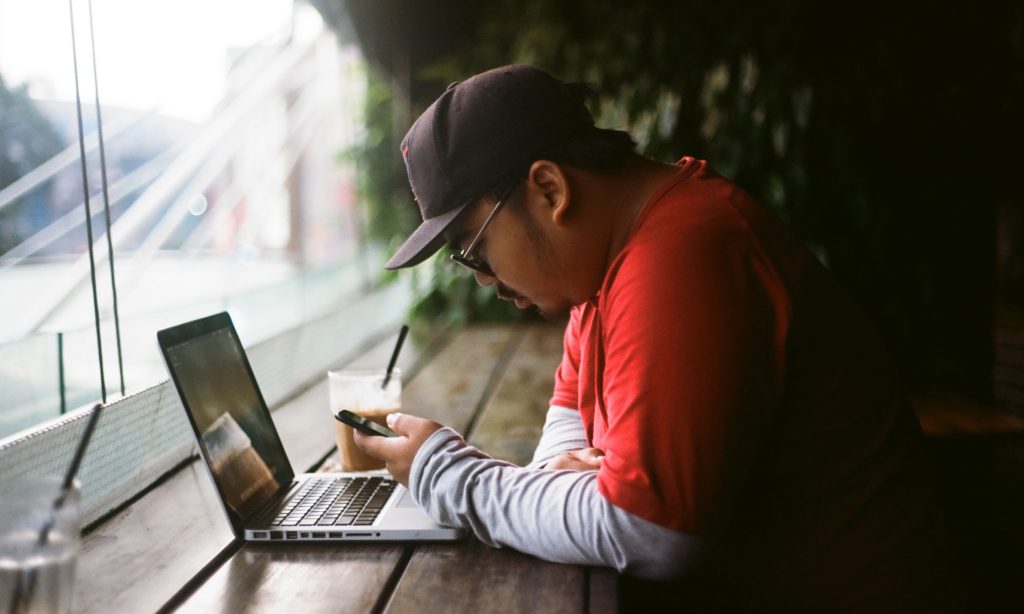
DISCOVER: Click here to enhance your productivity
Creating a Focused Environment
To combat the barrage of distractions in our digital lives, one effective strategy is to curate a focused environment. In an age where our attention is constantly pulled in multiple directions, consciously selecting our surroundings can significantly enhance our ability to concentrate.
Decluttering Your Digital Space
One of the first steps towards a minimalist approach is to declutter your digital space. This could mean organizing your computer desktop, unsubscribing from unwanted email newsletters, or deleting apps that no longer serve a purpose. Research suggests that a cluttered digital environment can lead to increased anxiety and distractedness. By simplifying your online presence, you promote a clearer mind, making it easier to focus on the tasks at hand.
Establishing Technology Boundaries
Alongside creating a clean digital workspace, establishing personal technology boundaries can mitigate distractions. Setting specific hours for checking emails or social media can help compartmentalize your time. For instance, the practice of designating “tech-free zones,” such as during meals or before bed, not only supports productivity during work hours but also fosters genuine connections with those around us. According to a study by the American Psychological Association, unplugging during personal time can lead to improved mood and reduced stress levels.
Utilizing Productivity Tools Wisely
While it may seem counterintuitive, certain productivity tools can actually serve to enhance focus when used judiciously. Applications designed to limit distractions, such as Forest or Focus@Will, encourage users to remain engaged in their tasks by integrating mindfulness into work routines. However, the key is to avoid the trap of becoming overwhelmed by multiple productivity apps; instead, select one or two that resonate with your workflow, and use them to facilitate rather than distract from your goals.
Promoting Natural Focus Through Nature
Breaking away from digital confines can also be incredibly beneficial. Studies show that spending time in nature significantly improves focus and cognitive function. Simple practices, such as a short walk during lunch breaks or working outdoors occasionally, can rejuvenate the mind and enhance overall productivity. Embracing the outdoors not only helps clear mental clutter but also resets your mood and energy levels, contributing to a more productive workday.
- Establish a Tech-Free Routine: Designate certain times of the day where screen time is limited.
- Disconnect During Meals: Make mealtimes a dedicated time for conversation rather than checking devices.
- Engage with Nature: Commit to regular walks or outdoor breaks to refresh your mindset.
As we navigate through the complexities of a digital world, the pursuit of minimalism isn’t just a trend; it’s a necessary adaptation. By reducing distractions and enhancing our environments, we can take meaningful steps towards greater productivity and fulfillment. In the subsequent sections, we will delve deeper into practical strategies aimed at achieving a balance between digital engagement and mindful productivity.
Embracing Minimalism for Enhanced Focus
In a world overwhelmed with information and digital distractions, learning to embrace minimalism presents a compelling strategy for increasing productivity. By streamlining your digital environment, you can eliminate unnecessary notifications and apps that clutter your attention. This curated approach not only fosters a sense of calm but also allows for more deliberate consumption of data that truly matters. As the digital space demands more of our bandwidth, the ability to efficiently manage what you consume becomes critical for your overall productivity.
Digital Detox Techniques
One effective method within the minimalist productivity toolkit is the concept of the digital detox. This practice involves taking intentional breaks from digital devices, thereby allowing your mind to recalibrate and refocus. For instance, implementing a weekly technology-free day can lead to reduced stress and a newfound clarity regarding your personal and professional goals. It’s during these breaks that individuals often experience a surge in creativity, facilitating fresh ideas and reimagined strategies once they reconnect.
The Power of Prioritization
Another essential aspect of minimalism in productivity is adopting a prioritization framework. Utilizing tools like the Eisenhower Matrix can assist in distinguishing between what’s urgent and what’s important, allowing you to allocate your time to tasks that align with your primary objectives. By prioritizing meaningful projects over less significant tasks, you enhance not only your efficiency but also your sense of fulfillment regarding work outcomes.
| Category | Key Features/Benefits |
|---|---|
| Productivity Boost | Focused work leads to faster and better task completion. |
| Stress Reduction | Minimized distractions lead to lower stress levels. |
Incorporating these minimalist productivity hacks into your daily routine can foster an atmosphere and mindset conducive to achieving clarity and focus amid the chaotic digital world. As you explore these strategies, you may find your ability to connect – both with your tasks and personal aspirations – greatly enhanced. Whether through adopting a minimalist approach or embracing digital detox days, the path to productivity could be simpler than you think.
DISCOVER MORE: Click here to unlock the power of saying no
Reconnecting with Authenticity
In an era where digital interactions often overshadow real-life connections, it becomes crucial to reconnect with authenticity. This process not only enhances productivity but also enriches personal and professional relationships. By stripping away the unnecessary layers of digital communication, individuals can focus more on genuine, meaningful interactions.
Fostering Deep Work
The concept of deep work, coined by author Cal Newport, emphasizes the importance of uninterrupted focus on cognitively demanding tasks. By consciously setting aside time blocks for deep work, individuals can achieve a level of concentration that is often unattainable in digital environments filled with distractions. For example, implementing the Pomodoro Technique—where one works for 25 minutes followed by a 5-minute break—allows for sustained focus while incorporating moments of reprieve to refresh mental energy. By marrying this technique with a digital detox during work sessions, one can cultivate a relentless pursuit of quality output.
Implementing Mindful Consumption
Another essential facet of minimalism in a digital landscape involves mindful consumption of content. This means selecting and engaging with only the most valuable information and resources. Curating news feeds, podcasts, and online articles to reflect personal or professional interests without succumbing to the overwhelming amount of available data is key. By making conscious choices about what to consume, you can free up cognitive resources for more important tasks and reduce the noise that can lead to mental fatigue.
Creating Rituals of Disconnect
Establishing rituals of disconnect has become a cornerstone of maintaining productivity in our hyperconnectivity-centric world. Simple practices, such as turning off notifications, using ‘Do Not Disturb’ features on smartphones, and designating screen-free periods, can signal to the brain that it is time to switch gears. According to a study published in the Journal of Environmental Psychology, engaging in rituals helps people manage transitional moments effectively, allowing for a more purposeful and less frantic approach to daily activities.
Building Community Through Shared Experiences
Minimalism in productivity doesn’t merely focus on the individual but also emphasizes building community through shared experiences. Participating in workshops, group projects, or co-working spaces can foster collaboration while cutting down on the solitary nature of digital work. The communal aspect of working alongside others can stimulate creativity, accountability, and motivation—traits that often dwindle when working in isolation. A survey by the Harvard Business Review found that employees who engaged in team collaborations reported higher job satisfaction and productivity.
- Schedule Deep Work Sessions: Create blocks of uninterrupted time dedicated solely to challenging tasks.
- Be Selective with Content: Curate your digital inputs to focus solely on quality and relevance.
- Establish Disconnect Rituals: Create specific times to unplug from all digital devices.
- Engage with Community: Seek out collaborative opportunities to enhance innovation and motivation.
Through these various strategies, individuals can navigate the complexities of modern productivity while remaining connected to what truly matters. Embracing this mindset of minimalism not only serves to improve individual output but also cultivates richer, more meaningful connections within our increasingly digital lives.
DISCOVER MORE: Click here to learn how saying no can boost your productivity
Conclusion
In a world where distractions abound and digital noise often clouds our focus, the shift towards a minimalist approach to productivity is both timely and essential. The strategies outlined—from deep work sessions that invite concentrated effort, to the implementation of mindful consumption and disconnect rituals—serve as invaluable tools to reclaim our time and energy. By consciously selecting the inputs that truly matter and establishing practices that promote genuine connections, we can break free from the cycle of constant digital engagement.
Moreover, the importance of building community through shared experiences cannot be overstated. Collaboration not only enhances our productivity but also ignites creativity and fosters a sense of belonging, combatting the isolation that often accompanies modern work. As individuals and teams engage more purposefully with one another, the benefits extend beyond mere output to include a richer, more fulfilling workspace.
Ultimately, as we navigate this digital landscape, embracing minimalism in productivity is a powerful way to reconnect with ourselves and others. By prioritizing quality over quantity in our interactions and outputs, we cultivate a more meaningful existence driven by intention and purpose. The journey of simple yet effective productivity hacks leads us not only to accomplish tasks but also to forge deeper connections, reminding us that sometimes, the best way to connect is to first disconnect.
